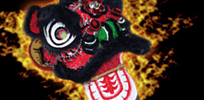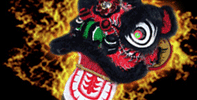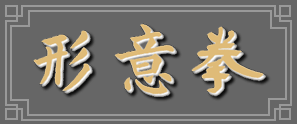|
The art of Hsing I Chuan is divided into two main systems:
the Twelve Animals and the Five Elements.
The Five Element system is further divided into two main branches:
the Hebei and Shan Xi styles.
The Twelve Animal style is closest to the original Xin Yi Liu He Quan in form and practice.
The movements in the forms are patterned after the spirit of various animals in combat,
including the Dragon, Tiger, Monkey, Chicken, Sparrowhawk, Eagle, Giant Bird (Tai), Horse, Snake, Swallow, Water Lizard (Tuo), Bear.
The Five Element based systems have five basic functions:
Splitting, Drilling, Crushing, Exploding, and Crossing.
These Five Elements form the foundation of the art.
The basic energies of the Five Elements are then expanded into
Twelve Animal forms which include variations of the animal forms
found in the Ten Animal styles as well as two additional animals:
the Tai (a giant mythical bird) and the Tuo
(a type of water lizard or large reptile).
These primary styles of Hsing I Chuan are still practiced in different regions
of China. The Hsing I Styles or Families are the
Shanxi, the Hebei, and the Henan.
Each style of Hsing I Chuan is distinctly different in essence and in appearance.
The Shanxi and Hebei methods are based upon the Five Elements and
the Twelve Animal styles, although the names of the animals sometimes vary a
bit from family to family. The Henan style does not emphasize the Five Elements
and only uses Ten Animals.
|



 Friday, December 5
Friday, December 5  Site Intro
Site Intro Guest Book
Guest Book Contact Us
Contact Us Mailing List
Mailing List Testimonials
Testimonials Coupons
Coupons School Location
School Location Class Schedule
Class Schedule Tien Shan Pai Curriculum
Tien Shan Pai Curriculum Wing Chun Curriculum
Wing Chun Curriculum Tai Chi Chuan Curriculum
Tai Chi Chuan Curriculum Seminars
Seminars Event Calendar
Event Calendar News
News Articles
Articles Photo Gallery
Photo Gallery Products
Products Chinese Terminology
Chinese Terminology FAQ
FAQ





